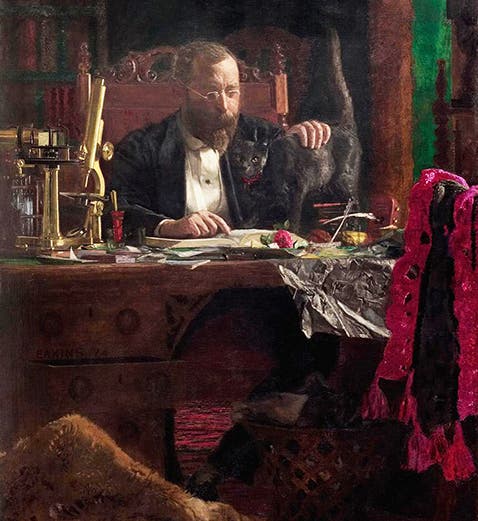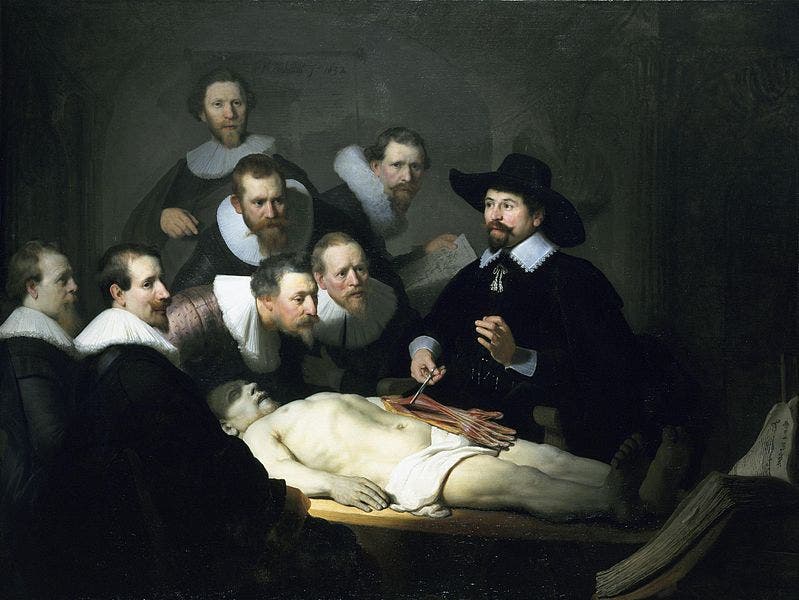Scientist of the Day - Benjamin Rand
Benjamin Rand, an American teaching physician, was born Oct. 1, 1827. Rand had a distinguished enough career as an academic, teaching at the Franklin Institute, the Philadelphia Medical College, and then Jefferson Medical College, all three in Philadelphia. But he never discovered anything significant, or had any particularly famous students (save one, as we shall see), and we would probably not remember him today, were it not for one happenstance: in 1874, the painter Thomas Eakins decided to quit drawing members of his family and paint a portrait of a professor from whom he had taken anatomy courses when he attended Jefferson Medical College in the 1860s. That professor was Benjamin Rand. The painting was finished in 1874 (first image). It does not depict Rand dissecting a cadaver, as in the famous Anatomy Lesson of Dr. Tulp (1632) by Rembrandt (second image); rather, Rand is shown reading a book and stroking a pet cat, an animal one hopes was not destined for the dissecting table.
The blandness of its subject matter aside, the Portrait of Benjamin Rand is a very dark and intense portrait, and it was no doubt the forerunner to Eakins’ more famous medical painting, The Gross Clinic (1875), which is much closer to Rembrandt’s Dr. Tulp in style (third image). The Portrait of Benjamin Rand was given to the Jefferson Medical College after Rand’s untimely death at age 55, where it joined The Gross Clinic, which had been given to the College earlier.
For over a century, two of the finest medical paintings in America resided, not in an art museum, but in a medical school. However, in 2006, Jefferson Medical College concluded that both portraits would be better off in a museum (and the College would be better off with the nearly $90 million that a sale would realize). Alice Walton, the Wal-Mart heiress, tried to buy The Gross Clinic, but a consortium of Philadelphia museums and fundraisers managed to match her bid of $68 million and keep it in town. So Alice turned her attention to The Portrait of Benjamin Rand, which she secured for a mere $20 million. It now resides in the Crystal Bridges Museum of American Art, in Bentonville, Arkansas. The original frame was recently restored (fourth image), and you can read about the restoration process on the Crystal Bridges Museum website.
Dr. William B. Ashworth, Jr., Consultant for the History of Science, Linda Hall Library and Associate Professor, Department of History, University of Missouri-Kansas City. Comments or corrections are welcome; please direct to ashworthw@umkc.edu.









